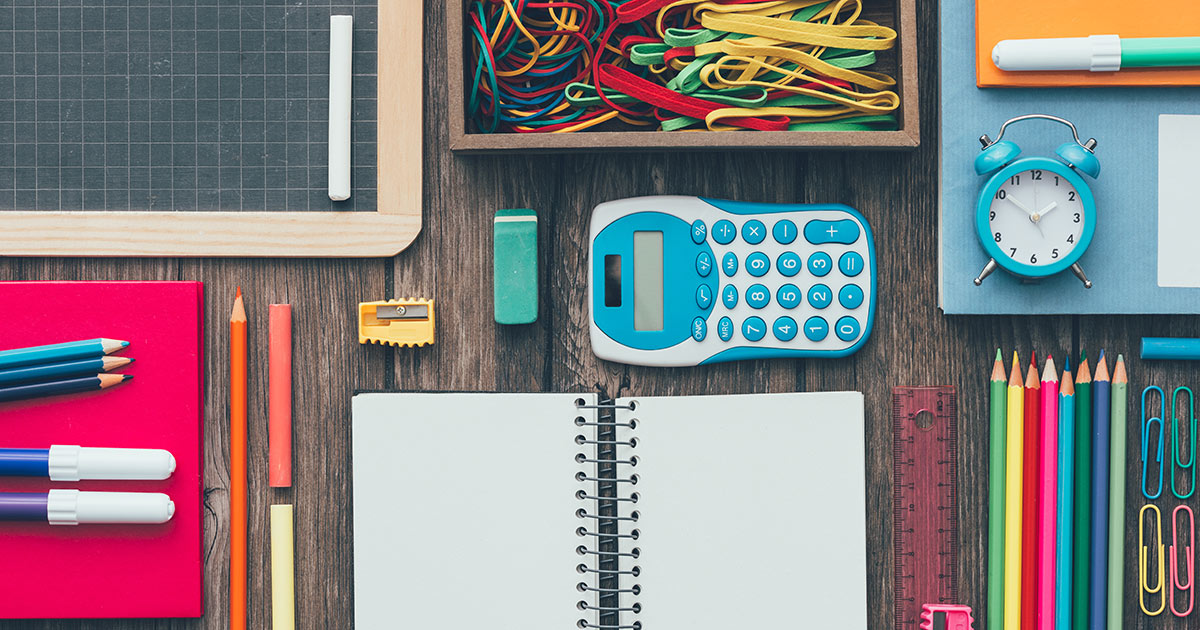
One of the beautiful things about being a dedicated teacher is the magic you see when understanding dawns or as a true learning experience takes place. However, it’s no state secret that teachers need supplies to help students achieve that magic.
Unfortunately, teachers often begin their educational journey scrambling for materials, hoarding items packed deep on shelves in the hopes that they will be useful in an upcoming lesson. It’s a pervasive theme in the modern classroom. But, what do you do when it just becomes too much?
Recently, Marie Kondo has taken the world by storm. Many have found her approach to be truly life-changing. The KonMari approach is most often applied to homes. It challenges people to view material items with a mindful perspective, urging them to explore whether items spark joy. If they don’t, owners are encouraged to thank those things for their service and let the items go. Applying the KonMari philosophy in the classroom calls for a different form of analysis. Even if classroom items don’t spark joy, it doesn’t mean they don’t have a meaningful and useful purpose.
How to KonMari your classroom
Whether you’re packing up at the end of the school year or adopting a new perspective to empower you at the beginning of the year, you can take the KonMari approach in your classroom and see magic happen in your physical space. As you approach each category of items your classroom, try out these six questions to perform the educational KonMari:
1. What is the most effective way I can create a meaningful learning environment?
Educators know that teachable moments are tough to plan. It’s common for teachers to hold on to stuff waiting for that inspirational opportunity to make itself known. However, chances are that if you dig to the bottom of that oversized Tupperware container and pull out what you’ve been holding on to, it probably doesn’t go far in creating a meaningful learning environment. Dump the buckets, examine the contents, and toss anything that is just filler.
2. How will this allow my students to meet their personal or academic goals?
Before you can answer this question, you have to know what your students’ goals are. Start by having your students identify what they want to achieve and then center your cleaning-out process around those goals. It’s tough to go wrong when your primary focus involves student goals.
3. How do you want your classroom to feel and are your materials helping to achieve that goal?
Ask yourself what you are trying to communicate to students and how you want the feel of your room to reflect that. For example, if you want it to feel energetic, only include items that contribute to that atmosphere.
4. Does this engage my students in meaningful learning?
Any seasoned teacher understands the value of teaching a man to fish over giving him a fish. Meaningful learning occurs when students are able to develop valuable skills and apply their learning experiences to the real world. When you are rummaging around in your bins, ask yourself if a six-year-old worksheet will really accomplish meaningful learning. If it doesn’t, time for it to go.
5. Does this inspire students to make real-life connections?
Great teachers support the growth of their students so they can be happy, empathetic people who work to make the world a better place. Choose materials that allow for real-life connections and your classroom will be an inspiring place to be.
6. Which tools are the most effective in helping your students learn?
Ultimately, your organizational tactics should reflect what’s truly important — helping your students learn and grow. If old worksheets reference “current events” from before your students were even born, they may not be effective in helping them learn. Choose only those materials that spark learning and purge the rest.
Remember that whatever approach you take to the magic of tidying up, it’s all about supporting students as they grow.
Ashley gained a passion for all things writing by spending years teaching a high school English class. She founded Contenthusiast so that she could spend her days hovering over a keyboard. When she isn’t writing, you can find her traveling with family or buried in a book.
Categorized as: Tips for Teachers and Classroom Resources
Tagged as: Back to School Season, Mid-Career Teacher, New Teacher, Veteran Teacher
